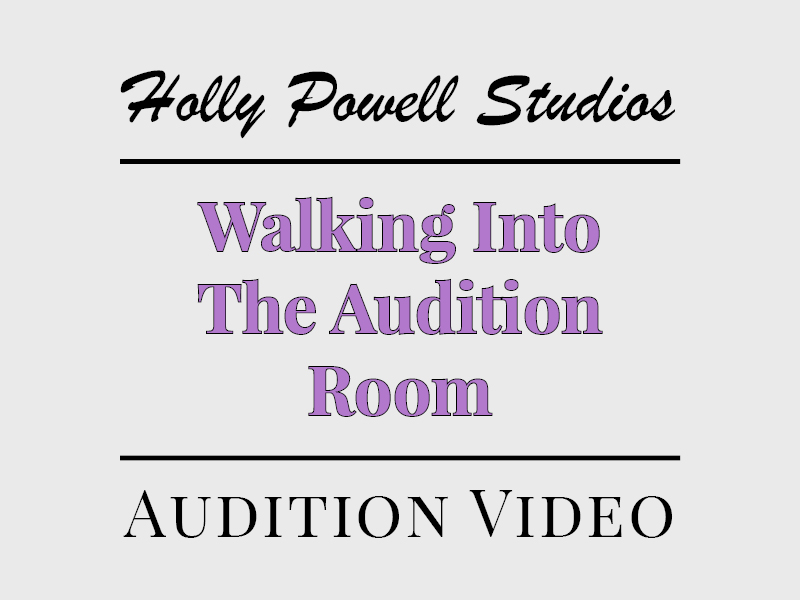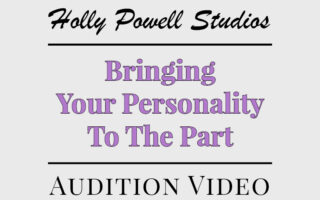The audition begins for the viewers when the actor walks into the audition room. That first impression of the actor can determine whether the viewers want to take 3 minutes to read the actor – or not. They want to see a confident actor who is focused, prepared, and ready for the audition. They want an actor to take control of the room and make eye contact as they say “Hello”. They want the actor to solve their problem of needing to cast this part and, believe it or not, they are rooting for the actor. But, if the actor walks into the room looking down, mumbling, and looking like a deer in the headlights, the viewers will assume this is either an actor who is very nervous, unprepared or inexperienced. They have tuned you out and don’t want to bother reading you even before you say your first line.
The audition begins for the actor when they are in the lobby; BEFORE they walk into the audition room. Walking through the door should be “part of the act”….acting the part of a confident actor… even if they don’t feel confident. If the actor does not feel confident, they should fake confidence: “Fake It Till You Make It”. As you walk from the waiting room into the audition room, treat it as if you are going from the wings of a theater onto the stage. Get into your zone, bubble, mental focus… whatever you call it… and begin your audition as you walk through the audition door, a confident actor taking control of the room.
Behavior influences thought. If an actor feels nervous or unprepared before walking into the audition room, they should try imitating a confident walk or assume a confident stance. The “feeling” of confidence in the body fakes the mind into “feeling” confident. So when the actor is waiting in the lobby, before their name is called, their mental focus should be that of an athlete…focused and ready to walk into the room.
As the actor walks into the audition room, they should make eye contact and say “Hello”, entering the room in a hybrid state… NOT in character… but focused and ready to go. If an actor chooses to walk into the room “in character”, it can backfire in a big way. The part the actor is auditioning for could be described as a jerk, a drug addict or arrogant. If you say “Hello” as the character would say “Hello”… not as yourself… it is possible the viewers will think you are really a jerk, a drug addict or arrogant. I have seen this happen during my years as a Casting Director, and the actor needs to remember that just the act of saying “Hello”, may be the only moment that shows they are an OK human being who will show up on time if cast, be civil to their fellow actors, and will learn their lines.
The actor should take control of the room and make it their space for 3 minutes. A chair is usually provided for the actor to use if they would like, and moving the chair to where the actor would like it to be, is a great way to take control of the room. Right off the bat the viewers can see the actor has made choices and is prepared. Five seconds should be taken before the audition begins so the actor can make the transition from walking into the room… into the scene itself. The viewers also need this transition time before they watch the scene, so if chit-chat happens, taking five seconds helps everyone have a moment to adjust. There are four tools the actor should use during these five seconds to help with this transition…
(1) Sense Of Place: Where does the scene take place
(2) Relationship: Who is the character talking to in the scene, and how does the character feel about that person
(3) Intention: What does the character want at the top of the scene
(4) Pre-Beat: What happens the moment before the scene starts
Once the scene gets going, the actor should LISTEN to the reader! This is the best tool an actor can use in an audition. “Listening” grounds the actor in the scene instead of anticipating what their next line will be. If an actor is not “listening”, the viewers can see it…they will know that the actor is not “present” in the scene. The last tool in the actor’s audition arsenal, is RESPOND IN THE LISTENING. Most Television and Film auditions are put on tape, and the viewers of the audition tape only see a close up of the actor… they don’t see the reader. It is very important that an actor genuinely “listen” and “respond in the listening”, so when the viewer watches the tape, they can see the thoughts going through the actors head… they see an actor who is present and in the moment of the scene.
Walking into the room is a skill that can be mastered with a confident mind set and the use of simple audition tools. The actor should walk into the audition room as an athlete would walk onto the field, dive into the pool, or step onto the mound. Having the mental focus of an athlete will help the actor conquer the first step in the audition process… walking into the audition room.



